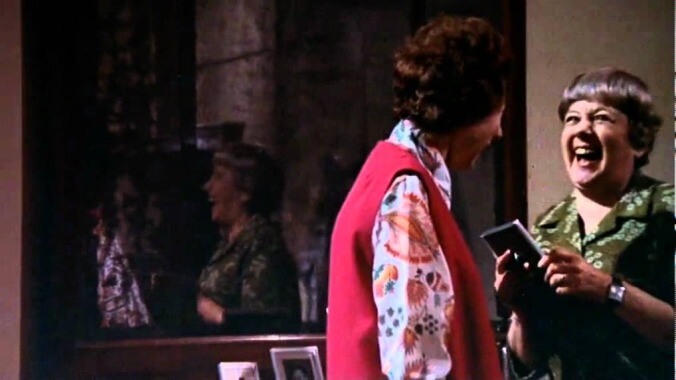Don’t Look Now’s ending still shocks, even if its famous sex scene doesn’t

Watch This offers movie recommendations inspired by new releases or premieres, or occasionally our own inscrutable whims. With the Sundance sensation Hereditary opening in theaters this week, we’re taking a look at other movies that make our skin crawl.
Don’t Look Now (1973)
The horror movie of the moment, if not inevitably of the year, Hereditary has already earned—here and elsewhere—some rather flattering comparisons to major classics of the genre, from Rosemary’s Baby to The Exorcist to The Shining. But none of those undeniable influences account for how it often plays less like straightforward fright fare than a particularly nightmarish drama about grief, and how it can swallow someone whole. To that end, the film owes a debt, too, to Nicolas Roeg’s singularly haunting Don’t Look Now, starring Donald Sutherland and Julie Christie as bereaved parents whose mourning process tilts, during a sojourn in Venice, into a supernatural experience. The two movies haven’t much in common stylistically—Hereditary both moves slower and goes harder on the scares—but they do fall somewhere on the same emotional wavelength, building their respective thrills on a bed of psychological distress.
Adapted from a novella by Daphne Du Maurier, whose short story “The Birds” inspired the Hitchcock movie, Don’t Look Now ripples its chronology often, and first to provide a shock to the system: a jarring, cognitively dissonant cut from the opening scene—which ends with an anguished scream from Christie’s Laura as she suddenly sees the drowned body of her daughter—to Sutherland’s John cheerfully overseeing the restoration of a church in Venice. Roeg has leapt right past the immediate, crushing aftermath of the tragedy, depositing us into an indeterminate later, when the pain of the loss has dulled to a low, persistent throb and the two have begun the impossible process of moving forward with their shattered lives. For Laura, that will mean taking solace in the comforting words of a blind clairvoyant who claims to have communicated with her child. John, skeptical of any shortcut to closure, has his own otherworldly encounters: the brief glimpses he keeps catching of a figure in a red rain slicker, just like the one his daughter was wearing the day she died.
Upon initial release, on a double bill with The Wicker Man (talk about a perfect pairing!), much of the conversation surrounding Don’t Look Now concerned a sex scene between Christie and Sutherland so frank that rumors still persist it wasn’t simulated. Today, the scene looks groundbreaking less for its explicitness and realism than for the elliptical editing style, which anticipated countless stylish, nonlinear flurries of montage (including a comparable love scene in Out Of Sight 25 years later). Meanwhile, the film’s reputation as an all-time creep-out rests largely on its shocking climax. (Would anyone even call it horror if it didn’t end how it ends?) That’s not to diminish Roeg’s ability to get under the skin, almost entirely through disorienting technique: sudden zooms, odd stings of audio, the jumbling of time and space during one of the numerous, influential intrusions of flashback. Roeg even leaves the Italian dialogue un-subtitled, to put us in the same confused position as Sutherland’s increasingly frazzled protagonist.
On its surface, this is a superstitious cautionary tale: Ignoring the omens and warnings and symbols all around him, John gets tangled in a self-fulfilling prophecy, hurtling toward a destination that the universe can’t stop him from reaching. But it can also be read, on some deeper level, as a dark parable about the dangers of putting off the tough reality of mourning. While Laura finds a way through, John keeps sidestepping his grief, even as his subconscious steers him toward it. Isn’t it a strange kind of self-punishment to go to Venice, where water’s everywhere? By the end, the city has become a dark labyrinth of the mind, John a rat racing through it, chasing a specter in red, hoping this time he’s not too late, until he’s finally face to face with the real horror of Don’t Look Now. Is there such a thing as a terribly inevitable twist ending?
Availability: Don’t Look Now is available to rent or purchase through the major digital services. It can also be obtained on Criterion Blu-ray or DVD from Netflix, Amazon, or possibly your local video store/library.